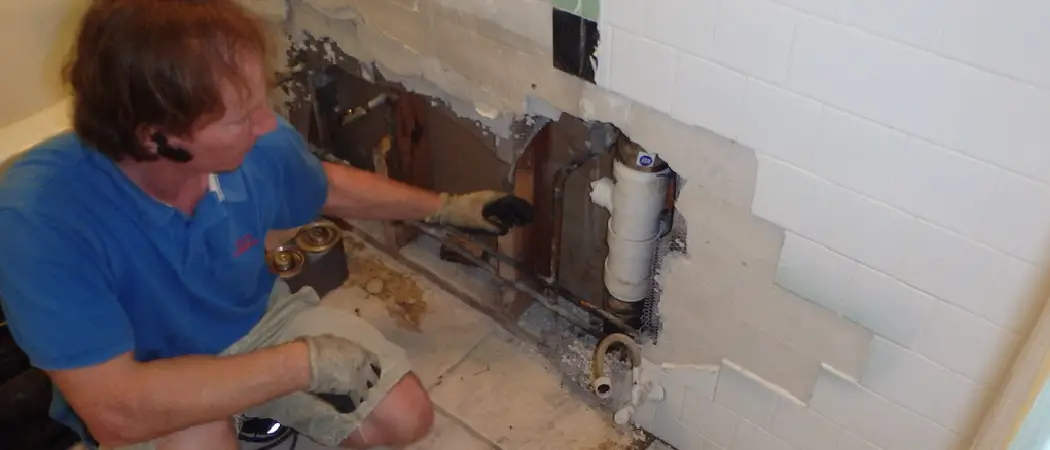Cast iron pipes have been the foundation of plumbing for decades, admired for their durability and longevity. But, like all materials, they have a service life. Understanding when to replace cast iron pipes in your home or building is pivotal to preventing costly leaks, water damage, and potential health risks.
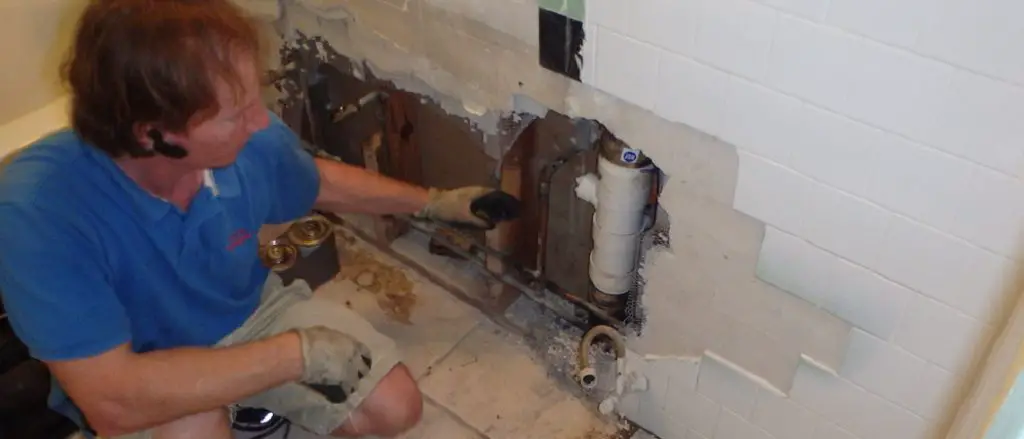
In this blog post, we’ll navigate the labyrinth of signs and considerations that indicate the necessity for replacement, ensuring that your plumbing system continues to function with integrity and efficiency.
Join us as we delve into the crucial indicators that it’s time for your cast iron pipes to retire gracefully. So, keep on reading this article to learn more about when to replace cast iron pipes.
Historical Context of Cast Iron Pipes
Origins and Early Usage
Cast iron pipes were first used in Europe in the 17th century and made their way to North America around the mid-1800s. They quickly became popular due to their strength, durability, and resistance to corrosion. Cast iron pipes were primarily used for sewer lines before being adapted for water supply systems.
Service Life of Cast Iron Pipes
The service life of cast iron pipes can vary, but they are expected to last between 80-100 years. However, external factors such as soil conditions, installation methods, and water quality can significantly impact their lifespan.
Common Issues Over Time
Over time, cast iron pipes may experience a buildup of rust and sediment on the inside, reducing water flow. They can also become brittle and crack under pressure, leading to leaks and potential flooding. Additionally, tree root intrusion is another common issue that can cause damage to cast iron pipes over time.
Understanding Cast Iron Pipes
Pros of Cast Iron Pipes
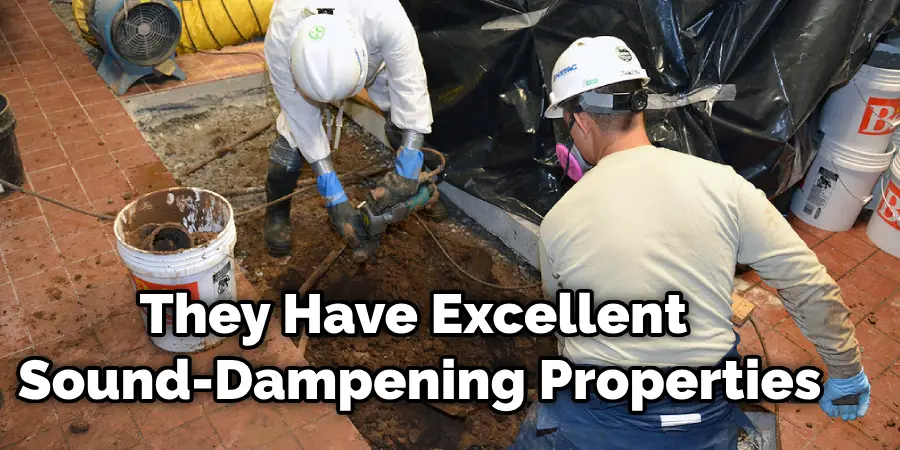
Cast iron pipes have many benefits, including their longevity and durability. They are also resistant to fire and can withstand high water pressure. Furthermore, they have excellent sound-dampening properties, making them an ideal choice for plumbing systems in multi-level buildings.
Cons of Cast Iron Pipes
While cast iron pipes have many advantages, they also come with some drawbacks. They are heavy and difficult to install, making repairs or replacements labor-intensive and costly. The buildup of rust and sediments over time can also affect the water quality, potentially leading to health hazards.
When to Replace Cast Iron Pipes: Signs Your Cast Iron Pipes Need Replacement
Visible Signs of Damage
One of the most obvious signs that it’s time to replace your cast iron pipes is visible damage. Look out for signs such as cracks, leaks, or discolored patches on the pipes. These are indications that the structural integrity of the pipes has been compromised, and they need to be replaced.
Frequent Blockages and Clogs
If you find yourself constantly dealing with blockages and clogs in your plumbing system, it may be a sign that your cast iron pipes are nearing the end of their lifespan. As the pipes age, they can become more susceptible to buildup and clogging, leading to reduced water flow and potential back-ups.
Water Quality Concerns
As mentioned earlier, the buildup of rust and sediment in cast iron pipes can affect the water quality. If you notice a change in the color, taste, or odor of your water, it may be an indication that your pipes need to be replaced.
Tree Root Intrusion
Tree roots are notorious for seeking out sources of moisture and nutrients, making them a common cause of damage to underground pipes. If you have trees near your home or building, regularly monitor your cast iron pipes for any signs of tree root intrusion, such as bulging or cracked sections.
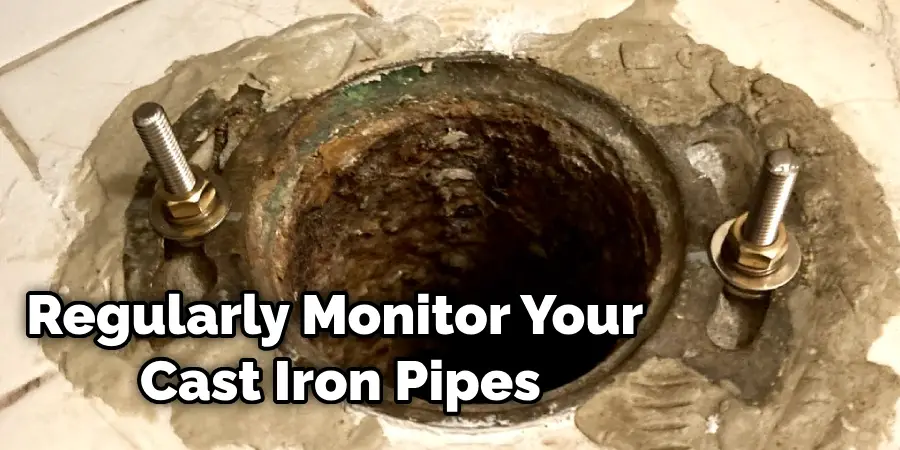
Pipe Leaks and Breaks
If you experience a pipe leak or break, it’s a clear indication that your cast iron pipes need to be replaced. This kind of damage is not only inconvenient but can also lead to costly repairs and water damage if addressed.
Noise and Vibration
As cast iron pipes age, they can develop structural issues that lead to increased noise and vibration when water is flowing through them. These vibrations can cause further damage to the pipes over time and should be addressed promptly.
Structural Integrity Concerns
If you have older cast iron pipes, it’s essential to inspect them regularly for any signs of structural issues. This includes looking out for cracks, corrosion, or bulging sections that can indicate potential failure.
Additional Factors to Consider
Cost of Repairs and Replacements
When considering when to replace cast iron pipes, it’s essential to factor in the cost of repairs and replacements. As mentioned earlier, cast iron pipes can be expensive to repair or replace due to their weight and labor-intensive installation process.
Age of Your Pipes
While the expected service life of cast iron pipes is 80-100 years, factors such as water quality and installation methods can significantly impact their lifespan. If your pipes are nearing the end of their expected service life, it may be more cost-effective to replace them instead of constantly repairing them.
Potential Health Risks
As cast iron pipes age and deteriorate, they can pose potential health risks due to the buildup of rust and sediment inside. This can lead to the contamination of water and potential health hazards. If you have concerns about the quality of your water, consider replacing your cast iron pipes.
Plumbing System Upgrades
If you’re planning on upgrading other parts of your plumbing system, it may be a good idea also to replace your cast iron pipes. This will ensure that your entire system is up to date-and functioning efficiently.
Replacement Options for Cast Iron Pipes
When it comes time to replace your cast iron pipes, you have a few options to choose from:
PVC or CPVC Pipes
PVC and CPVC pipes are lightweight, easy to install, and have a longer lifespan compared to cast iron pipes. They are also resistant to rust and corrosion, making them an excellent choice for water supply systems.
Copper Pipes
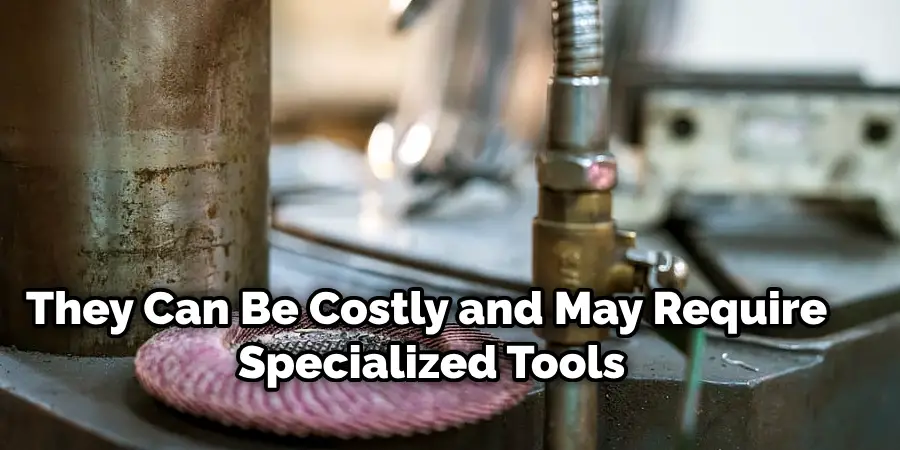
Copper pipes are another popular option for replacement. They have a long lifespan, are resistant to corrosion, and can handle high water pressure. However, they can be costly and may require specialized tools for installation.
PEX Pipes
PEX pipes are a newer option that has gained popularity in recent years. They are flexible, easy to install, and have excellent resistance to corrosion and freezing temperatures. However, they may not be suitable for outdoor use or exposure to sunlight.
ABS Pipes
ABS pipes are commonly used for sewage and drainage systems. They are lightweight, easy to install, and resistant to corrosion. However, they may need to be more suitable for hot water supply systems.
Maintenance Tips for Different Types of Replacement Pipes
PVC or CPVC Pipes
To maintain the integrity of PVC or CPVC pipes, it’s essential to avoid exposure to high temperatures and direct sunlight. Regularly check for leaks or damage and repair them promptly.
Copper Pipes
Copper pipes require minimal maintenance, but it’s important to monitor for potential corrosion from aggressive water sources. Insulate them properly to prevent freezing during colder months.
PEX Pipes
PEX pipes are low maintenance, but it’s crucial to check for any damage or leaks regularly. It’s also important to avoid exposure to sunlight and high temperatures, as these can weaken the material.
ABS Pipes
To maintain ABS pipes, it’s essential to regularly clean them and avoid harsh chemicals that can cause deterioration. Monitor for any signs of damage or blockages and address them promptly.
The Importance of Hiring a Professional Plumber for Pipe Replacements
Replacing cast iron pipes is a complex and labor-intensive process that requires specialized knowledge and equipment. It’s crucial to hire a professional plumber who has experience in working with different types of replacement pipes to ensure the job is done correctly.
A professional plumber can also properly assess your plumbing system, determine the best replacement options, and provide guidance on maintenance and upkeep for the new pipes. This can save you time, money, and potential headaches in the long run.
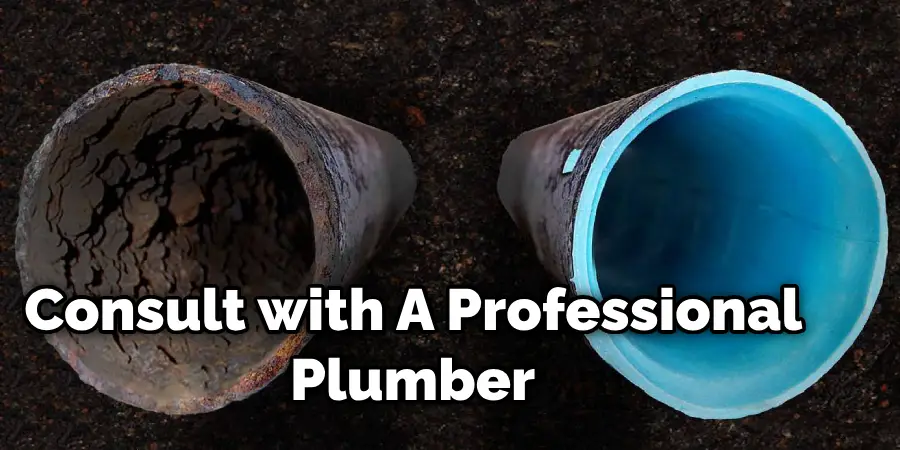
Overall, keeping a close eye on the condition of your cast iron pipes and addressing any issues promptly can help prevent costly repairs and damage to your home or building. If you suspect that it may be time to replace your cast iron pipes, consult with a professional plumber for guidance and assistance in selecting the best replacement option for your specific needs.
How to Properly Dispose of Old Cast Iron Pipes
Recycling Options
One eco-friendly option for disposing of old cast iron pipes is to recycle them. Many metal recycling facilities accept cast iron pipes, where they will be melted down and repurposed into new materials.
Proper Disposal Methods
If you are unable to recycle your old cast iron pipes, it’s crucial to dispose of them properly. Contact your local waste management facility for guidance on the proper disposal methods in your area. It’s important not to dump old pipes in landfills, as they can release harmful chemicals into the environment.
Comparison of Costs Between Repairing and Replacing Cast Iron Pipes
Cost of Repairs
Repairing cast iron pipes can be costly, as it often requires specialized equipment and labor. The cost will also depend on the extent of damage and the location of the damaged pipe.
Cost of Replacements
Replacing cast iron pipes with more modern options may seem like a significant expense upfront, but it can save you money in the long run. Newer pipes have a longer lifespan and require less maintenance, resulting in fewer repair costs over time.
Benefits of Regular Plumbing Inspections for Early Detection of Pipe Issues
Prevent Costly Repairs
Regular plumbing inspections can detect any issues with your pipes early on, potentially preventing more significant and costly repairs down the line.
Ensure Efficient Water Usage
Damaged or deteriorating pipes can lead to water leaks, resulting in higher water bills. Regular plumbing inspections can help identify and address any leaks, ensuring efficient water usage and saving you money in the long run.
Maintain Healthy and Clean Water
Damaged pipes can lead to contaminants or pollutants entering your water supply, putting your health at risk. Regular inspections can help identify and address any potential hazards, ensuring that you have access to clean and safe water for use.
Benefits of Regular Plumbing Inspections for Early Detection of Pipe Issues
Prevent Costly Repairs
Regular plumbing inspections can help detect any issues with your pipes early on, potentially preventing more significant and costly repairs down the line.
Ensure Efficient Water Usage
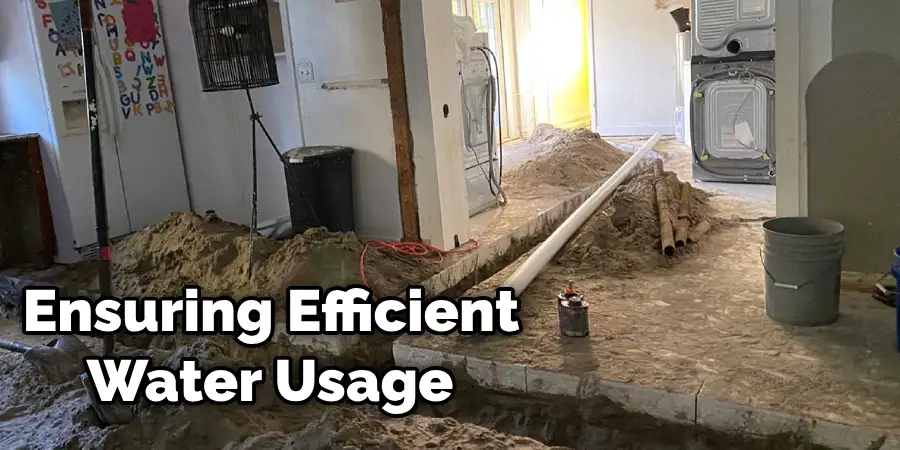
Damaged or deteriorating pipes can lead to water leaks, resulting in higher water bills. Regular plumbing inspections can help identify and address any leaks, ensuring efficient water usage and saving you money in the long run.
Maintain Healthy and Clean Water
Damaged pipes can lead to contaminants or pollutants entering your water supply, putting your health at risk. Regular inspections can help identify and address any potential hazards, ensuring that you have access to clean and safe water for use.
Environmental Impact of Using Different Types of Replacement Pipes
PVC and CPVC Pipes
PVC and CPVC pipes are made from synthetic materials and may release harmful chemicals during production. However, they can be recycled and repurposed, reducing their environmental impact.
Copper Pipes
Copper is a natural material that can be easily recycled, making it a more environmentally friendly option for replacement pipes. However, the production of copper pipes does require energy and resources.
PEX Pipes
PEX pipes have a lower environmental impact compared to other replacement options. They require less energy and resources to produce and can also be recycled.
ABS Pipes
ABS pipes are made from plastic, which is not biodegradable and can release harmful chemicals into the environment if improperly disposed of. However, they can be recycled and repurposed, reducing their environmental impact.
Conclusion
In conclusion, understanding the maintenance, replacement, and disposal processes for cast iron pipes is crucial for homeowners and building managers alike. While the costs of repair and replacement can vary, the long-term savings and benefits of choosing modern, more durable materials are evident.
It’s imperative to engage the services of a professional plumber for pipe replacements to ensure the integrity of your plumbing system. Furthermore, regular plumbing inspections are a vital practice for the early detection of pipe issues, helping to prevent expensive repairs, conserve water, and maintain the safety of your water supply.
Lastly, considering the environmental impact of the different types of replacement pipes is essential for those invested in sustainable living, with recycling and proper disposal methods serving as key factors in your decision-making process.
By being proactive and informed, you can ensure the longevity and efficiency of your plumbing infrastructure while minimizing your environmental footprint. Thanks for reading this article, “When to replace cast iron pipes?”

